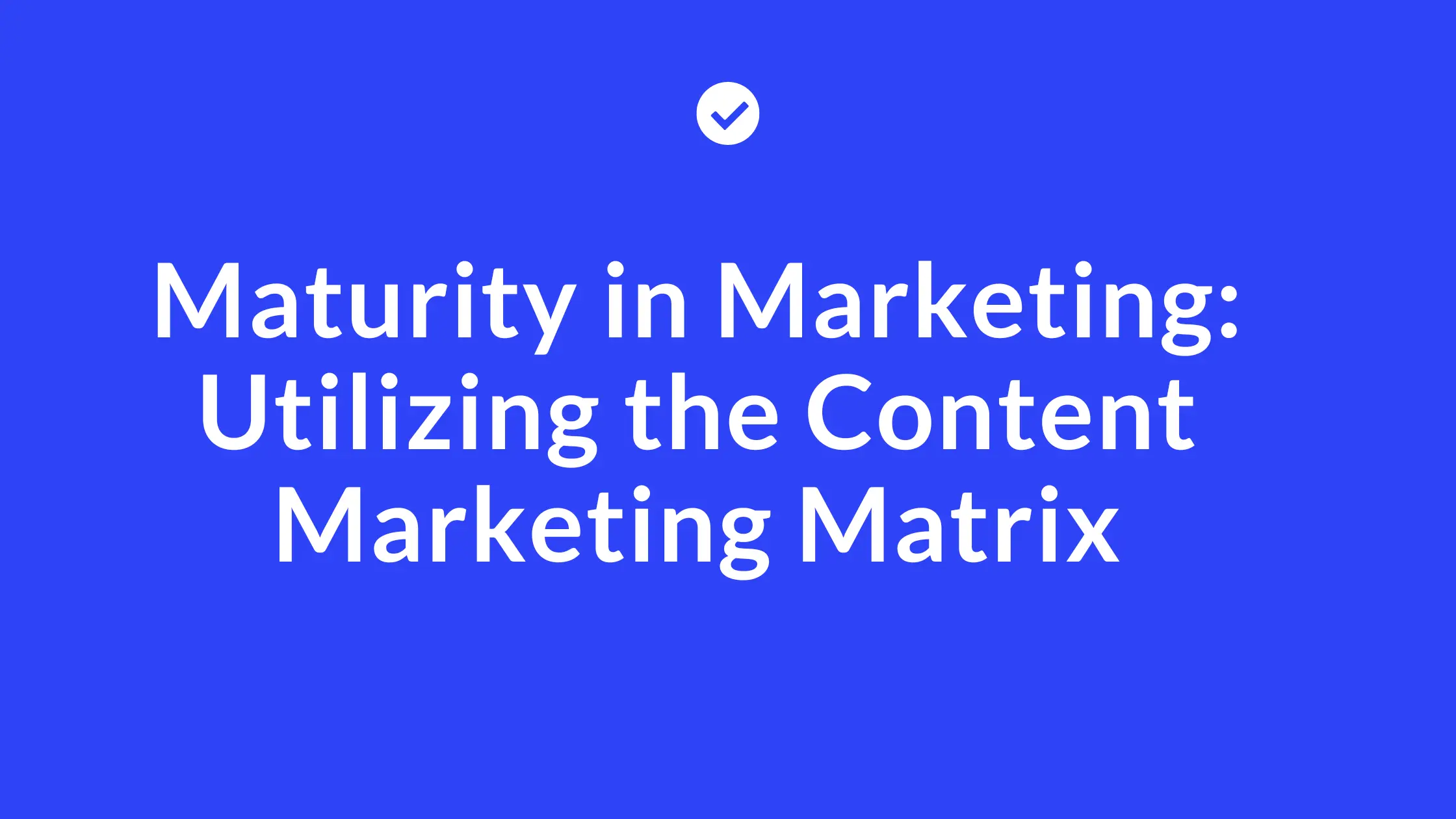In the dynamic realm of digital marketing, the need for mature strategies is more critical than ever. Among the plethora of tools available, the Content Marketing Matrix stands out as a robust framework designed to align content strategies with customer needs and business goals. This comprehensive guide delves into the intricacies of the Content Marketing Matrix, illustrating how to leverage it for enhanced marketing maturity.
What is the Content Marketing Matrix?
The Content Marketing Matrix is a strategic planning tool that helps marketers map out their content to meet specific customer needs at different stages of their buying journey. Developed by Smart Insights, this matrix aids in generating ideas for the most engaging content types and ensuring that these ideas are relevant to the target audience.
The Four Quadrants of the Content Marketing Matrix
The Content Marketing Matrix is divided into four quadrants based on the primary purposes of content: to entertain, educate, inspire, or convince.
To Entertain
Content created to entertain might not directly sell a product, but it fosters a positive emotional connection with the audience. Examples include:
- Humorous Videos
- Interactive Games
- Entertaining Articles
To Inspire
Inspirational content motivates the audience towards a purchase decision. This type of content often features:
- Success Stories
- Customer Testimonials
- Inspirational Quotes
To Educate
Educational content demonstrates expertise and provides solutions to the audience’s challenges. Effective formats include:
- How-to Guides
- Informative Blogs
- Webinars
To Convince
Persuasive content encourages the audience to take the final step in the purchasing process. Key formats include:
- Case Studies
- Product Demos
- Customer Reviews
Applying the Content Marketing Matrix
Step 1: Define Themes Around Business Goals
Start by reviewing the value of different types of content and defining relevant KPIs such as unique page visits, time on page, and shares. Plot the current content formats on the matrix and analyze competitor use of these formats.
Step 2: Choose a Target Audience
Identify specific target audiences for each matrix. Segment your market into smaller subcategories to better understand their needs and pain points.
Step 3: Understand Customers’ Pain Points
According to WordStream, target audiences typically have four main pain points:
- Financial: Looking for value at a lower cost.
- Productivity: Seeking better time management solutions.
- Process: Improving internal or personal processes.
- Support: Needing timely assistance.
Step 4: Address Pain Points Alongside Funnel Stages
Match content to the buyer’s journey stages:
- TOFU (Top of the Funnel): Create awareness with educational content addressing primary pain points.
- MOFU (Middle of the Funnel): Build trust with case studies and white papers.
- BOFU (Bottom of the Funnel): Inspire purchases with emotionally resonant content and strong CTAs.
Step 5: Use CTAs to Move Audience to the Next Stage
Ensure that each piece of content includes a clear, compelling call-to-action to guide the audience through the funnel stages.
Benefits of the Content Marketing Matrix
- Provides a Clear Framework: Helps in planning and organizing content marketing efforts, ensuring the right content is distributed at the right stages of the customer journey.
- Highlights Content Needs: Identifies gaps and opportunities in your content strategy.
- Empowers Sales Enablement: Provides sales teams with relevant content aligned with the buyer’s journey.
- Increases Click-Through and Conversion Rates: Delivers content that resonates with the target audience, boosting engagement and conversions.
- Triggers New Ideas: Encourages continuous improvement and innovation in content strategy.
- Clarifies Unstructured Content: Helps structure and organize content for better readability and impact.
- Captures Metadata, Keywords, and Tags: Enhances SEO by aligning content with audience search behaviors.
Case Studies and Examples
Google excels in creating clean, minimalist designs that engage users. Their use of animated infographics and interactive quizzes helps in presenting information effectively and keeping users engaged.
New York Times
The New York Times is known for its innovative content presentation, such as the “Snow Fall” feature which combines multimedia storytelling with traditional journalism to create an immersive reader experience.
Dollar Shave Club
Dollar Shave Club uses humorous and engaging video content to build brand recognition and drive impressive growth. Their content is on-brand and resonates well with their target audience.
Convoso
Convoso’s case study for Digital Market Media is an excellent example of using color and layout to create engaging and easily readable content. They highlight results right at the beginning and use visuals to keep the audience interested.
Conclusion
Mastering the Content Marketing Matrix is a step towards achieving greater maturity in marketing. By aligning content with the specific needs of your audience at different stages of their journey, you can enhance engagement, drive conversions, and ultimately achieve your business goals.
“Content is King.” – Bill Gates
“The best marketing doesn’t feel like marketing.” – Tom Fishburne
For further reading, consider exploring additional resources on the Smart Insights website and ButterCMS blog.
By implementing these strategies and continuously refining your approach, you can elevate your content marketing efforts and achieve sustained success.







